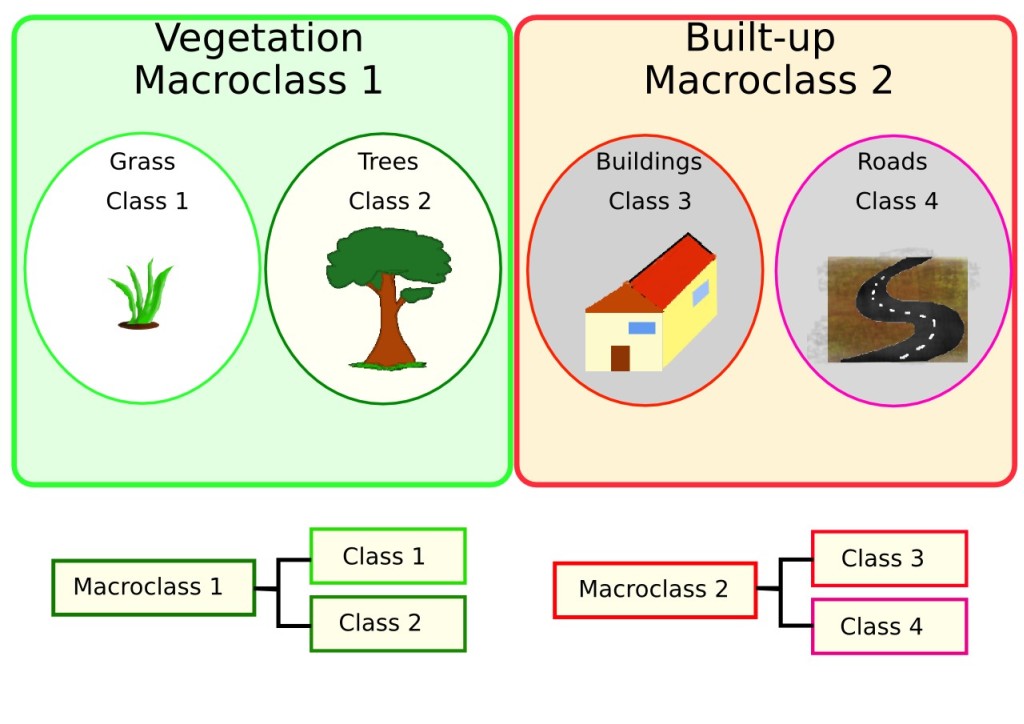This is the second part of some basic definitions about remote sensing that are already in the user manual of the Semi-Automatic Classification Plugin.
This post provides basic definitions about supervised classifications.
Land Cover
Land cover is the material at the ground, such as soil, vegetation, water, asphalt, etc. (Fisher and Unwin, 2005). Depending on the sensor resolutions, the number and kind of land cover classes that can be identified in the image can vary significantly.Supervised Classification
A semi-automatic classification (also supervised classification) is an image processing technique that allows for the identification of materials in an image, according to their spectral signatures. There are several kinds of classification algorithms, but the general purpose is to produce a thematic map of the land cover.Image processing and GIS spatial analyses require specific software such as the Semi-Automatic Classification Plugin for QGIS.
Training Areas
Usually, supervised classifications require the user to select one or more Regions of Interest (ROIs, also Training Areas) for each land cover class identified in the image. ROIs are polygons drawn over homogeneous areas of the image that overlay pixels belonging to the same land cover class.Classes and Macroclasses
Land cover classes are identified with an arbitrary ID code (i.e. Identifier). SCP allows for the definition of Macroclass ID (i.e. MC ID) and Class ID (i.e. C ID), which are the identification codes of land cover classes. A Macroclass is a group of ROIs having different Class ID, which is useful when one needs to classify materials that have different spectral signatures in the same land cover class. For instance, one can identify grass (e.g. ID class = 1 and Macroclass ID = 1 ) and trees (e.g. ID class = 2 and Macroclass ID = 1 ) as vegetation class (e.g. Macroclass ID = 1 ). Multiple Class IDs can be assigned to the same Macroclass ID, but the same Class ID cannot be assigned to multiple Macroclass IDs, as shown in the following table.| Macroclass name | Macroclass ID | Class name | Class ID |
|---|---|---|---|
| Vegetation | 1 | Grass | 1 |
| Vegetation | 1 | Trees | 2 |
| Built-up | 2 | Road | 3 |
Therefore, Classes are subsets of a Macroclass as illustrated in Figure Macroclass example.

Macroclass example
If the use of Macroclass is not required for the study purpose, then the same Macroclass ID can be defined for all the ROIs (e.g. Macroclass ID = 1) and Macroclass values are ignored in the classification process.
